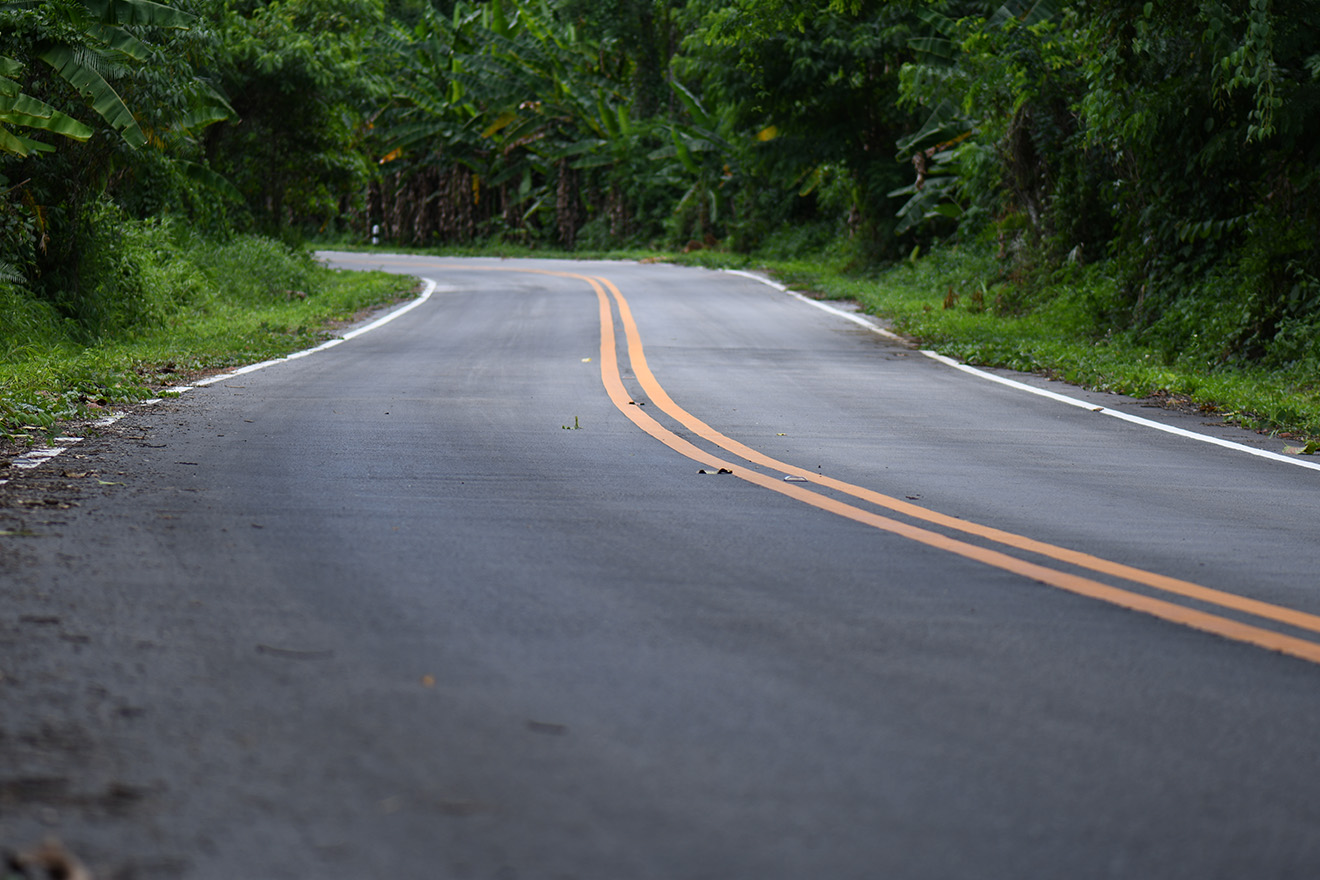Different communities face a variety of obstacles on their roads, from farm vehicles on rural roads to winter driving conditions. The following are some of our public awareness campaigns to make roads safer for all users.
Snow How
This campaign reminds drivers to safely navigate winter roads by slowing down, being patient and giving snowplows plenty of space. Everyone has to do their part to get around safely in the winter. When a winter storm is expected, all municipalities have a plan:
- First, hills and bridges are treated in advance of a storm to make them easier to plow.
- As soon as snow begins, salt trucks head out and treat expressways and main roads first, followed by smaller routes.
- Plowing begins in a similar order to salting. With large snowfalls, plowing usually begins once the storm has ended.
Drivers need to have their own plan, which includes leaving earlier and outlining a route. It is important to delay unnecessary travel during significant storms to give plows time to do their jobs. It’s also safer for drivers. Other ways to drive safely this winter include:
Go Slow Driving in Snow
Drive according to weather conditions, not the speed limit.
- Adjust your speed accordingly and give yourself extra travel time. During a storm, posted speed limits are usually too fast. Conditions can also be unpredictable and change rapidly.
- Avoid sudden moves, starts or stops. Start slowly on slick or snowy roads and brake gradually, giving yourself plenty of space. Steer gently into turns to maintain control.
- Be visible. Use your low-beam headlights when it is snowing. They are brighter than daytime running lights and will turn on your tail lights.
Be Nice Driving On Ice
Stopping distance on ice is double that of a dry road.
- Leave extra space when driving in icy conditions.
- Approach intersections slowly when they are covered with ice or snow.
- Use extra caution on bridges and ramps. Ice can form without warning, even if roadways are dry.
- Watch out for black ice – a thin, nearly invisible coat of ice that can make the road look like shiny new asphalt. Pavement will look grey or white in the winter.
It’s Not A Race, Give Plows Space
Plows can’t see you and you can’t see the road ahead.
- Plows are extra wide and throw snow and spray, making it difficult to see if the road ahead is clear for passing.
- The safest place is well behind the plow.
- Wait for plows to pull over before passing. But don’t accelerate too quickly – the road ahead is unplowed and could be slick or snowy.
- Avoid parking in the street. Plows can’t clear roads that are blocked by parked cars.
Feel free to share the Snow How message with your municipality and road users on social media or your websites. Click and download the materials below and share them publicly. Tag Good Roads on your social campaign to create awareness about safe winter driving conditions.
Be Nice Driving on Ice (PNG 2MB)
Drive Slow in the Snow (PNG 2MB)
It’s Not A Race, Give Plows Space (PNG 2MB)
Implementing Vision Zero in Ontario
Vision Zero is a fundamental reimagining of the way road safety is approached. Rather than accepting that injuries and deaths are inevitable outcomes of transportation networks, the cornerstone of Vision Zero is that all of these outcomes are preventable and that human safety should not be traded for efficiency. The ultimate goal of Vision Zero is to achieve zero fatalities or serious injuries on roadways.
Humans make mistakes. As such, the fault for road fatalities or injuries lies with both road users and the design of the transportation systems. Non-human considerations such as road infrastructure, public policy, vehicle technology, and the health care system all have a role to play in making our roads safer.
Vision Zero was launched in Sweden in 1997 and has since gradually spread across the globe.
In Canada, at the federal level, the Canadian Council of Motor Transportation Administrators (CCMTA) is the custodian of the Road Safety Strategy 2025 (RSS 2025). RSS 2025 encourages all road safety stakeholders to make Canada’s roads the safest in the world. RSS 2025 is a high-level strategy whose objective is to enable all jurisdictions in Canada to realize zero fatalities and serious injuries on roads nationwide.
Provincially, British Columbia and Manitoba have developed Vision Zero plans. Other provinces and territories such as Alberta, Prince Edward Island, and the Northwest Territories have created road safety plans. However, they do not incorporate Vision Zero principles. None of the other provinces and territories have official road safety plans.
At the local level, a handful of municipalities in Ontario have Vision Zero plans.
- City of London
- City of Toronto
- City of Kingston
- Peel Region
- Durham Region
Other Ontario municipalities, such as The City of Mississauga, have pledged to adopt Vision Zero and are currently in the process of creating their plans.
New York City has taken Vision Zero seriously. Mayor Bill de Blasio, who was elected in 2014, had Vision Zero as a key plank of his campaign. A $1.6-billion plan was developed at the beginning of the mayor’s first term that looked at changes that need to be made to legislation, enforcement, education, and engineering.
These efforts have paid off.
Since 2014 pedestrian deaths fell by 44 per cent and overall traffic fatalities were down by 27 per cent. The first half of 2018 saw the fewest traffic-related fatalities in any six-month period ever measured. The path to Vision Zero will likely not be linear.
Take a look at what Vision Zero looks like on an urban road Click Here
Rural Roads Safety Initiative
Background
Simply put, rural roads are more dangerous than other roads. In 2019 there were 428 traffic fatalities on municipal roads, of which 205 occurred in rural municipalities. The unfortunate reality is that with only 13.3% of the provincial population, rural Ontario accounted for 48% of traffic fatalities on municipal roads.
Many rural, remote, and northern municipalities are responsible for maintaining extensive road networks on a smaller population/tax base. As a result, these roads tend to be older, in poorer condition, and incorporate only basic road safety infrastructure.
With a provincial partnership, problematic sections of Ontario’s rural, northern, and remote roads can be made less dangerous. Interventions could include replacing legacy assets (i.e., wooden posts with guardrails), installing absent road fixtures (i.e., guiderail, signs, lighting, road paint), or upgrading to more modern assets with innovative safety functions (i.e., guardrails, guiderails, crash cushions). In other jurisdictions governments are doing just this.
Road Safety Audits: Lessons From Down Under
Austroads, the collective of Australian and New Zealand transport agencies, performs road safety audits (RSA) across Australasia. An RSA is a formal examination of a road, in which an independent, qualified team reports on the project’s crash potential and actual safety performance. The primary objective is to identify high risk areas of the road network and provide necessary treatments that prevent road trauma from occurring.
Good Roads is now training Road Safety Auditors for Ontario. These Auditors have completed the Good Roads x Safe System Solution Road Safety Auditor course and have learned how to conduct a Road Safety Audit in accordance with the 2023 Good Roads Road Safety Audit Guidelines.
Visit the list of current Certified Road Safety auditors in Ontario: https://goodroads.ca/certified-road-safety-auditors/
Rural Road Safety Initiative
Austroads is known as the global leader in RSAs and have created a guide which is used by transport agencies across Australasia. As no similar guide exists in Canada or Ontario, there is an opportunity to create a Made-in-Ontario version. Good Roads is partnering with Austroads to adapt their world leading RSA guide to the Ontario environment with the aim of training road safety auditors so that this knowledge is available locally.
At such a point, rural and northern municipalities can tap into this expertise to identify solutions to problematic stretches of their roads.









